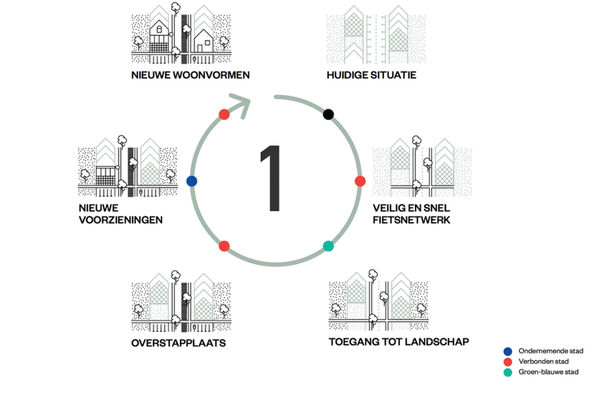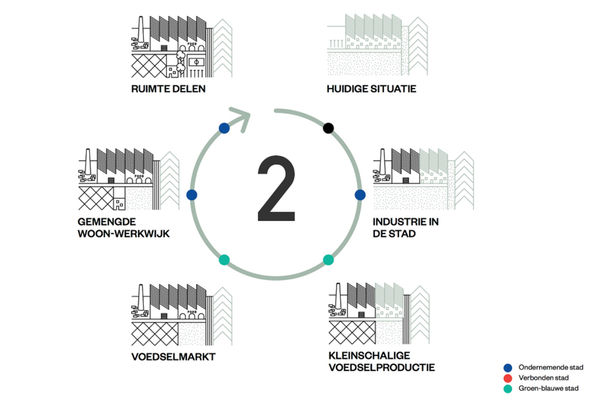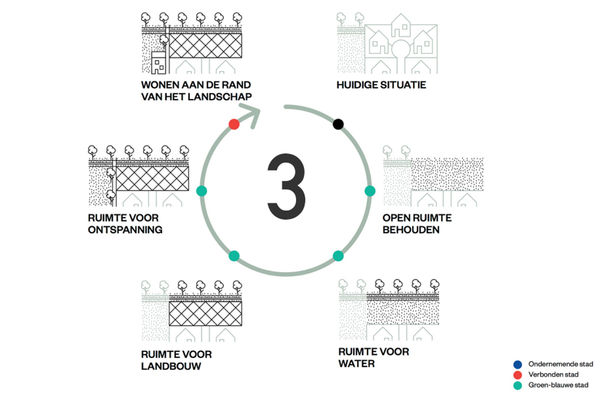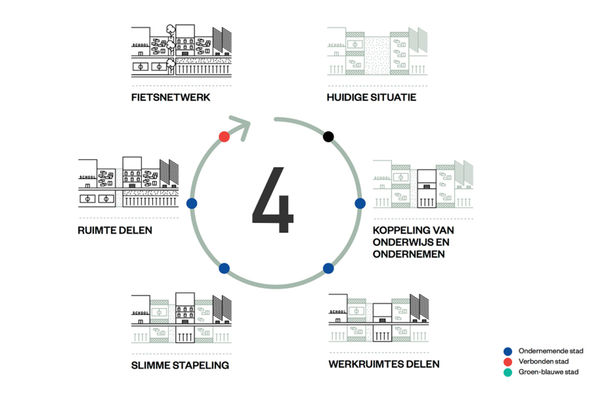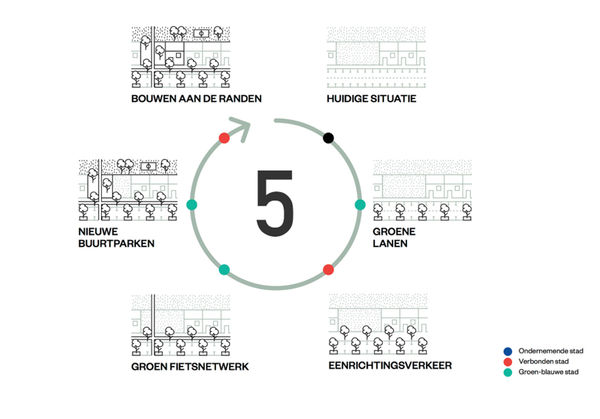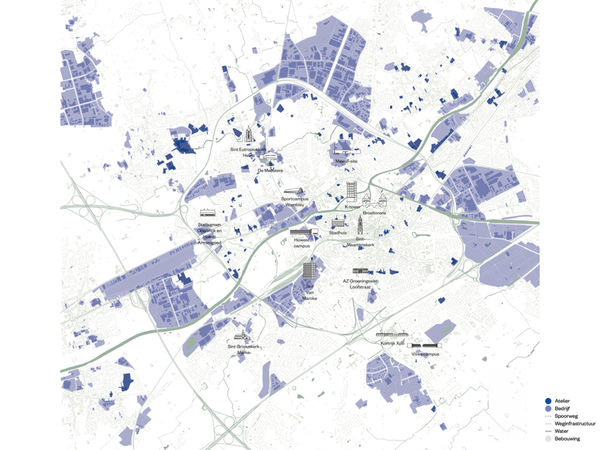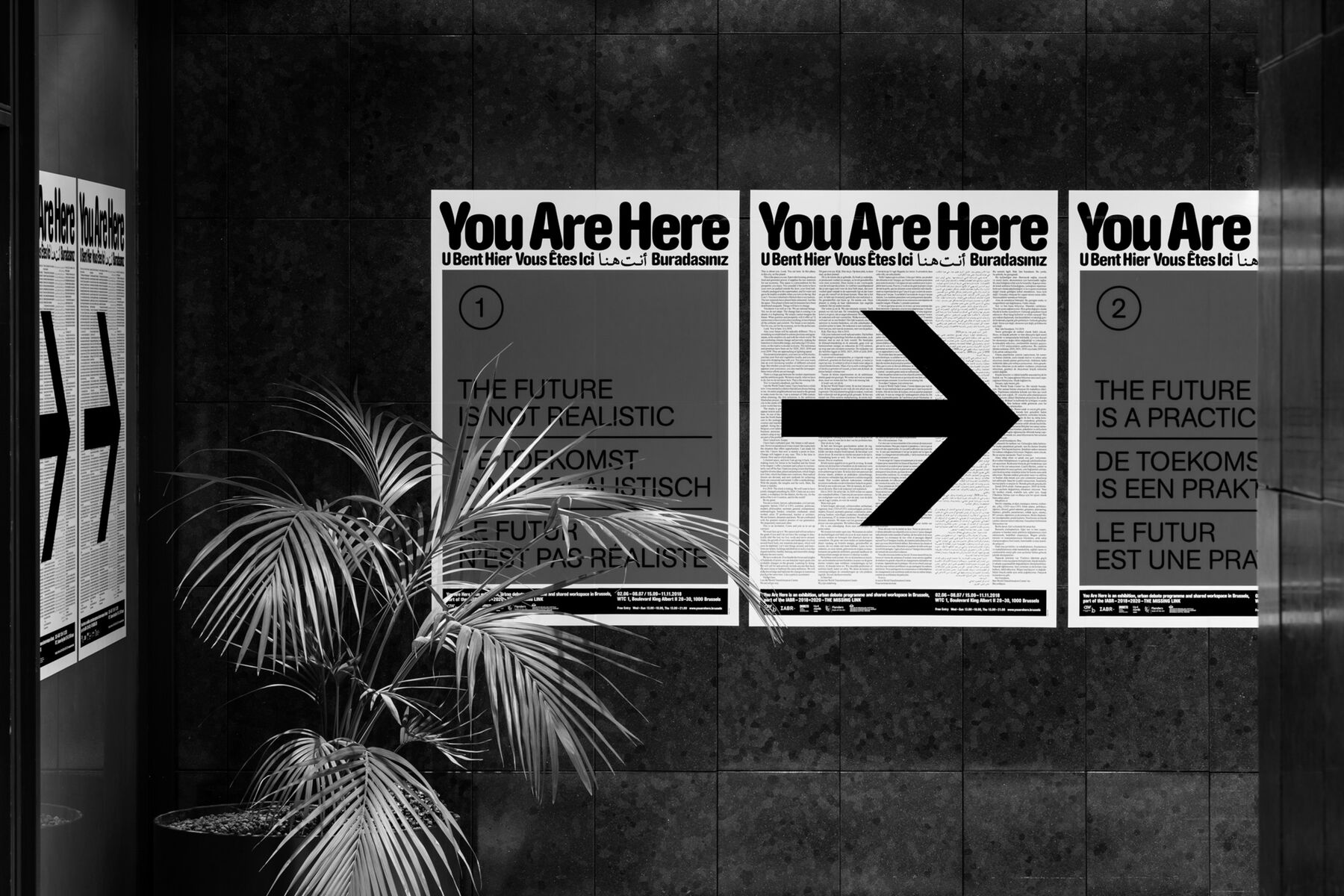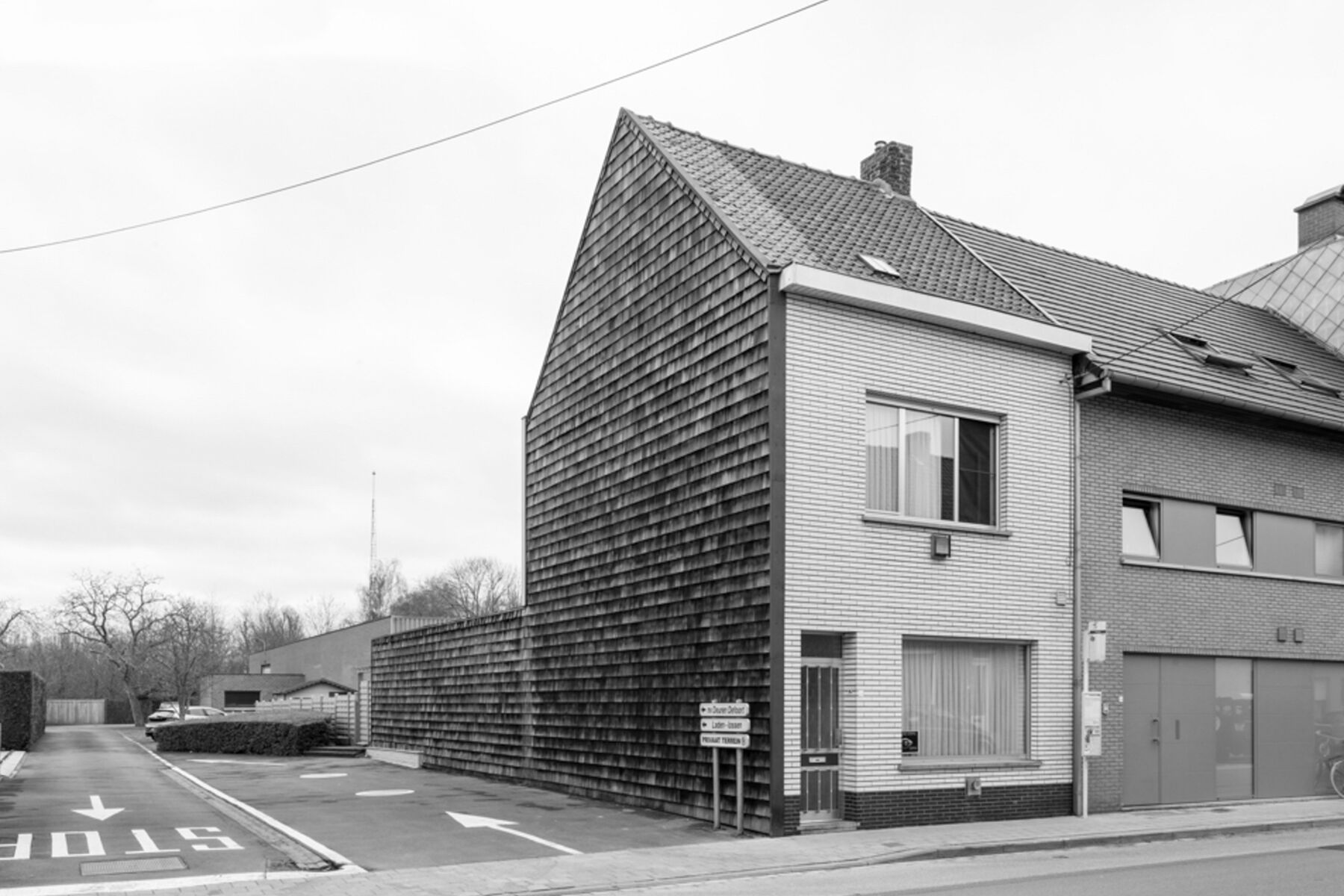Today Kortrijk is growing less rapidly than other central cities in Flanders. At the same time there is still a great deal of space that could be developed for new homes and businesses. How could we use and capitalise on this open space? What parts of it do we protect and where do we allow new developments to take place? In other words: how could we seize the release of open space as an opportunity to increase Kortrijk's liveability and thus turn the so-called construction freeze into something positive?
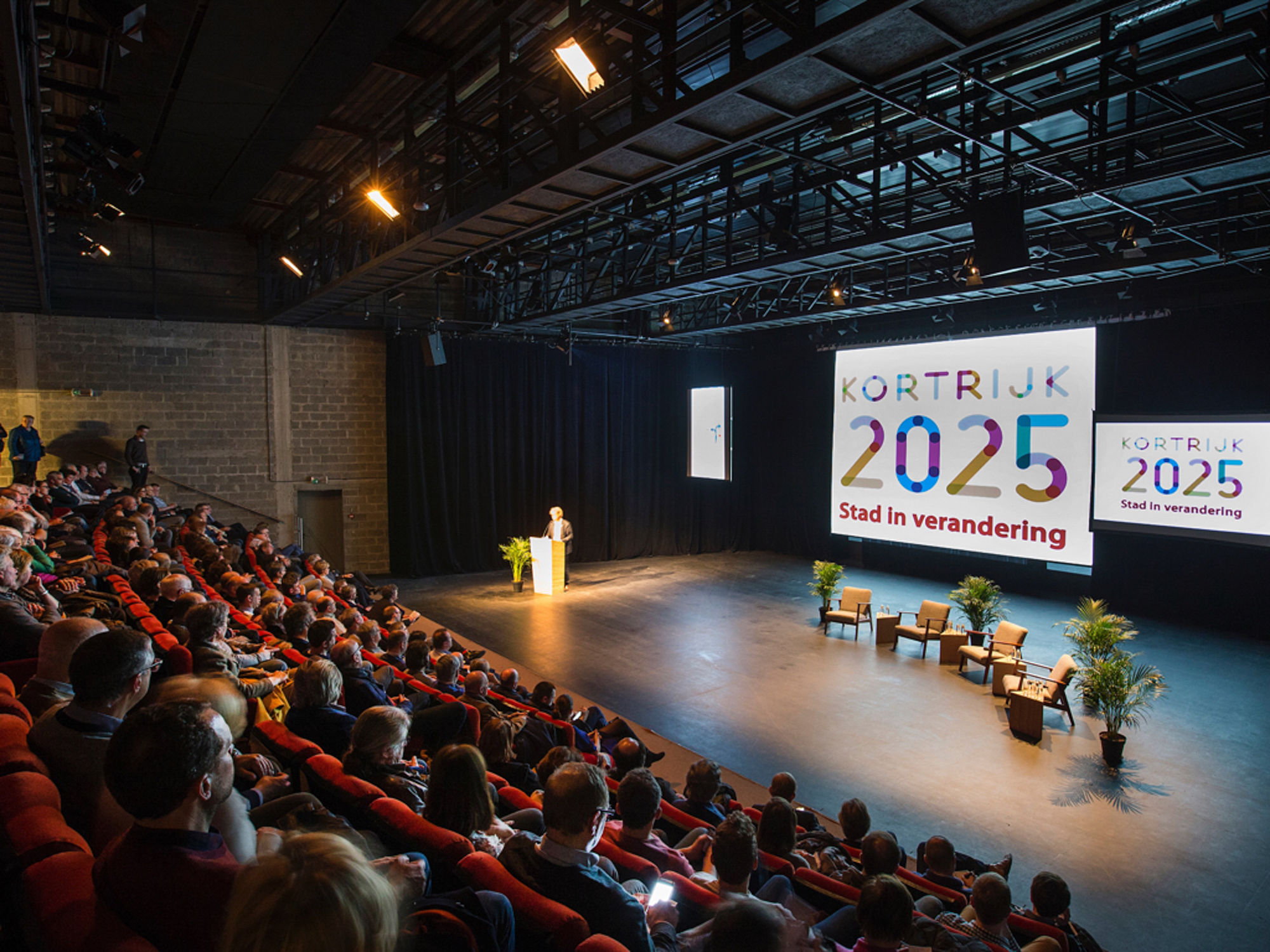

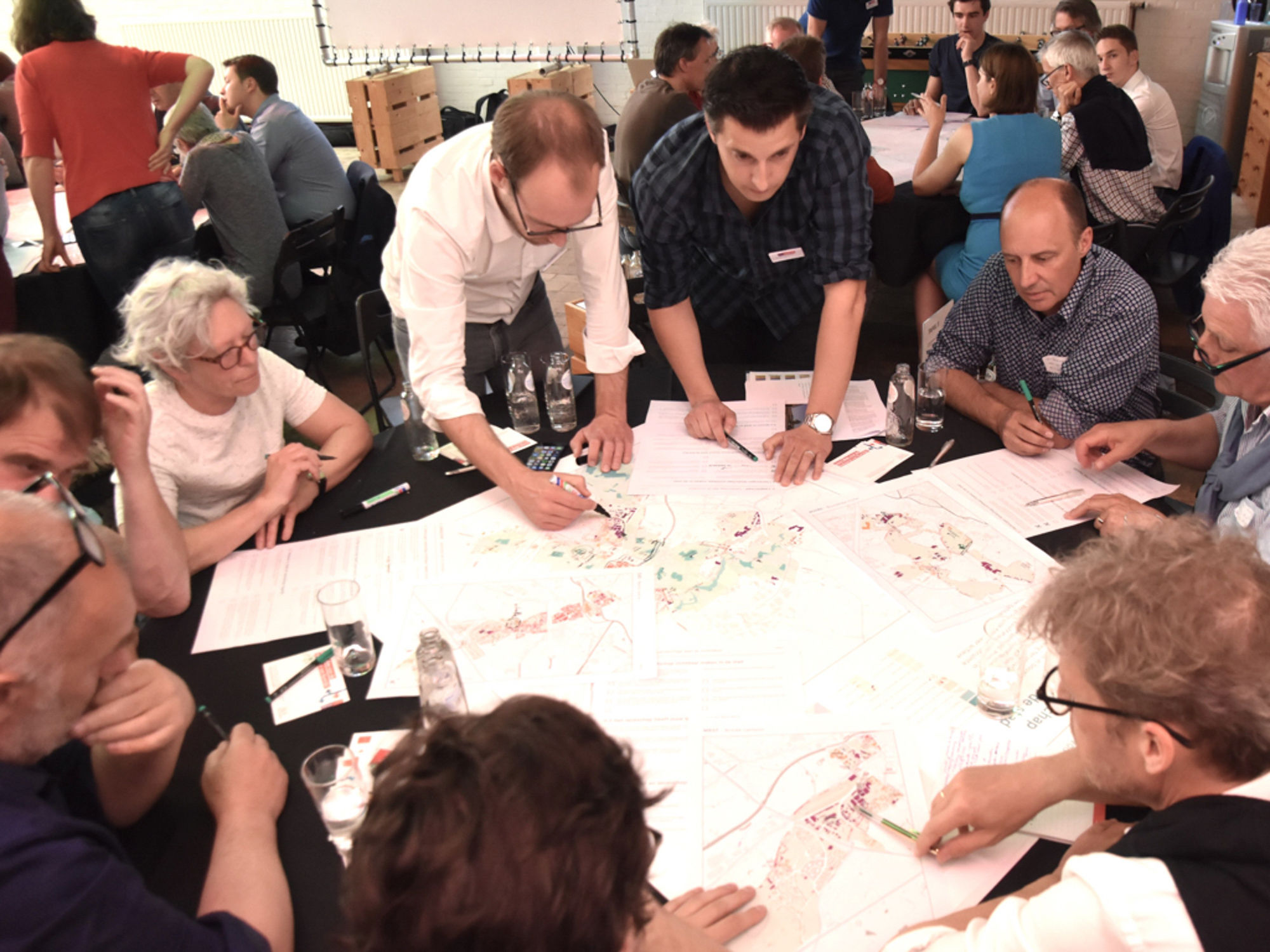
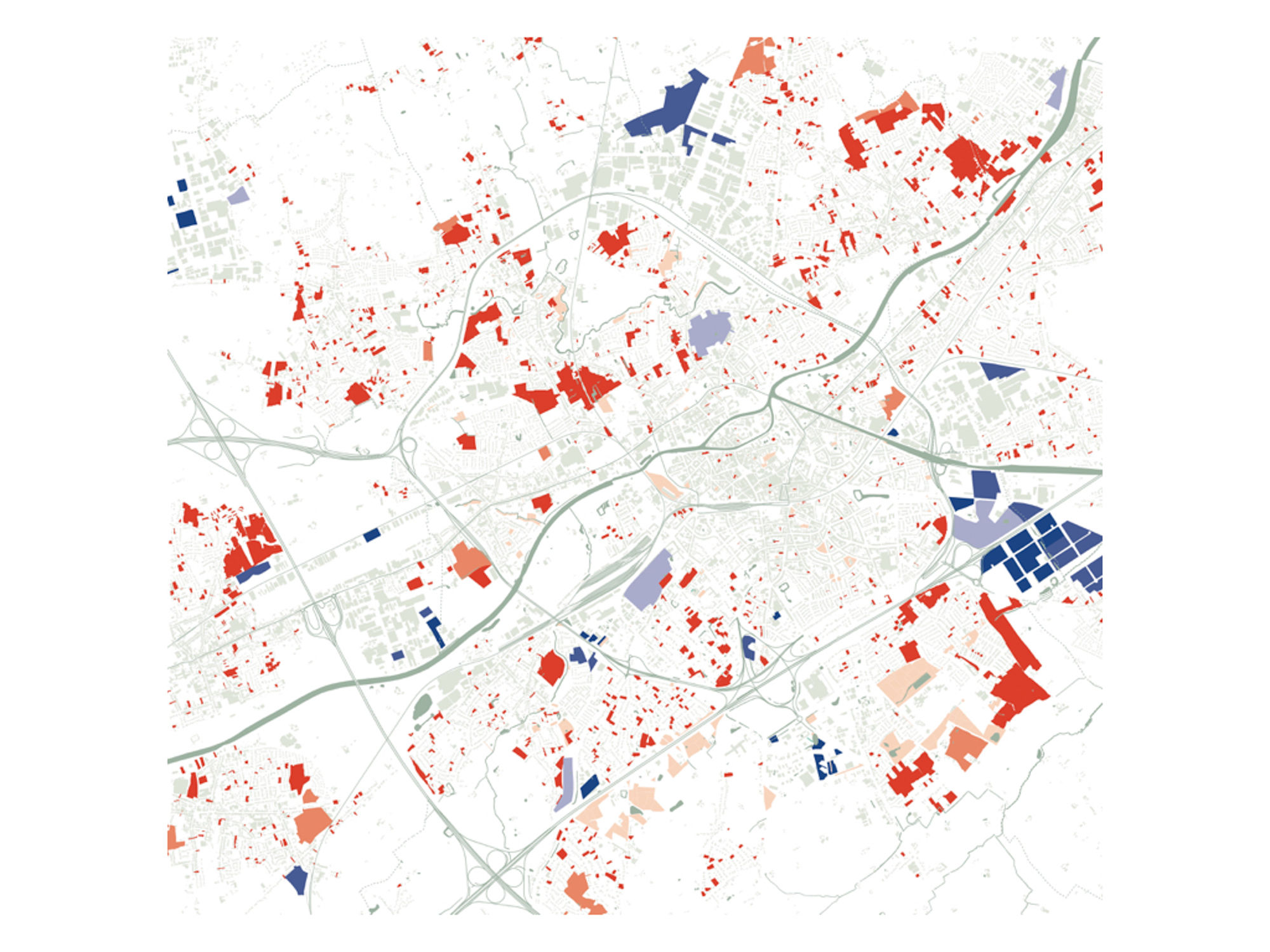
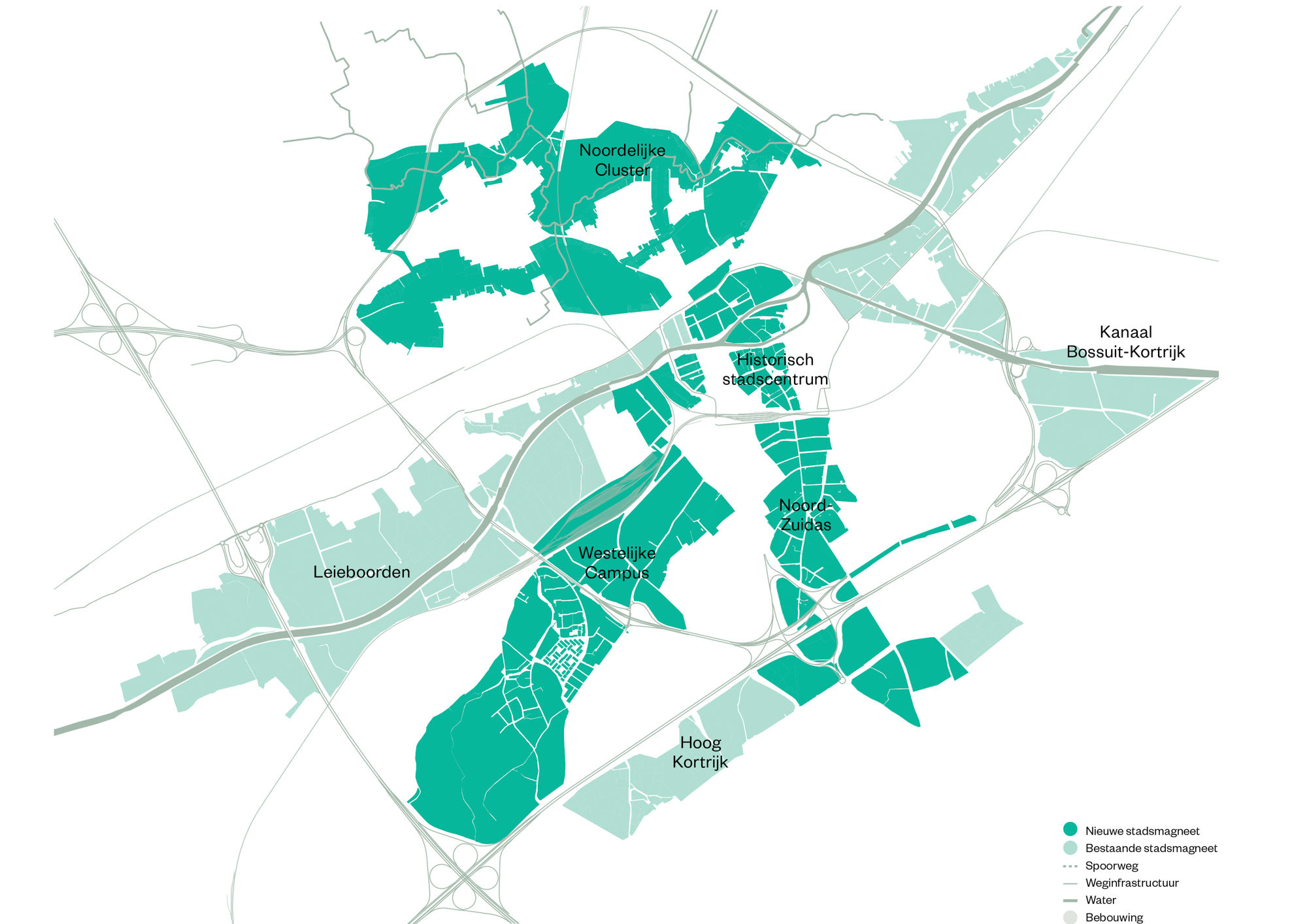
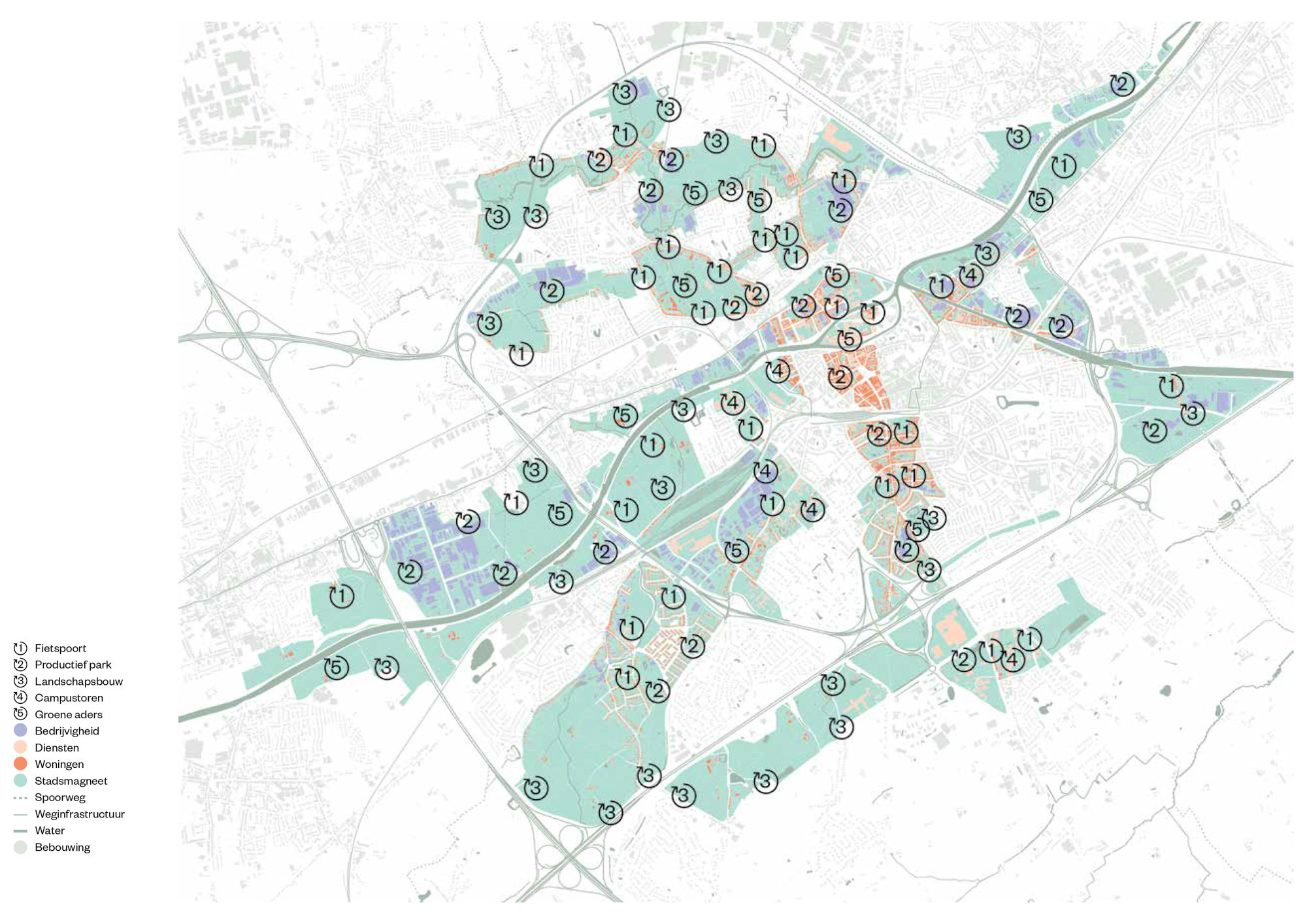
In order to answer this question the City of Kortrijk, in association with Architecture Workroom Brussels, launched an intensive study and participative process. We organised three City Debates in which a thousand residents actively participated and let their voices be heard. After all, a city cannot be created by experts alone; local knowledge, which is able to bring to light specific and everyday needs, must also be applied.
These needs were summarised in three future cityscapes that build on the qualities already available in Kortrijk: the entrepreneurial city, the connected city and the green-blue city. We refer to the parts of the city where these three qualities are bundled as city magnets. They constitute the city's poles of attraction around which we can apply smart densification and where the new future of Kortrijk could be prioritised.
In order to establish the city magnets we identified potential strategies that could connect the three qualities at specific places in the city in a concrete and spatial manner. These five out of potentially more integrated strategic project strategies are:
1. Cycling gateway
2. Productive park
3. Landscape construction
4. Campus tower
5. Green veins
A single cycling gateway does not yet amount to a cycling city. A single green lung does not yet constitute a green city. And a single campus tower does not yet provide our economy with a wind of change. The proposed strategic projects will only have a real impact if we replicate them, not once, but multiple times in different places at the same time, starting with the city magnets. The strategic projects do not require any grand gestures or serious investment. We could already start implementing them today, step by step.
We do not apply the five strategies in the same way in every place. The right combinations and the right specifics are highly dependent on the local context. Each place requires a unique approach. If we can determine the places in which the different strategies could be implemented, we obtain a quality selection framework to steer development potential more effectively.
